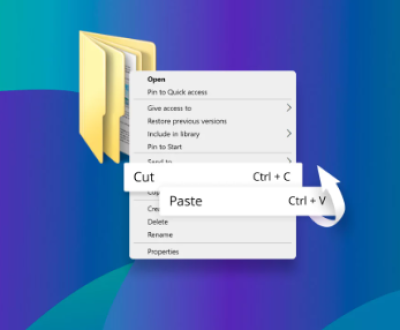Converting a text file to an Excel spreadsheet is a common task that many users need to perform. Whether you have data in a .txt or .csv format, Excel can easily handle these files and allow you to work with them in a more structured way.
1. Text Files and Excel
What is a Text File?
A text file is a basic file format that contains plain text data. It can come in many forms such as .txt, .csv, or even tab-delimited formats. These files usually do not contain formatting or any special structure other than text data that is separated by spaces, commas, or tabs.

What is Excel?
Microsoft Excel is a powerful spreadsheet program that allows users to organize, analyze, and visualize data. Excel files typically have the extension .xlsx, and they offer advanced features such as formulas, charts, and pivot tables that make data analysis easier and more efficient.
Why Convert Text Files to Excel?
Converting a text file to an Excel spreadsheet can make it easier to manage, analyze, and manipulate the data. While text files are simple and portable, Excel provides a range of tools for organizing, filtering, and performing complex calculations on the data, which can save time and reduce errors.
2. Types of Text Files
CSV Files
CSV (Comma Separated Values) files are one of the most common types of text files used for data storage and exchange. Each row in a CSV file represents a record, and each column is separated by a comma.
Tab-Delimited Text Files
A tab-delimited file is similar to a CSV file, but it uses a tab character (instead of a comma) to separate values. This format is often used for data that contains commas, as it helps avoid confusion.
Other Delimited Files
Other delimiters can be used to separate the data in text files, such as semicolons or spaces. The key thing is that the delimiter must be consistent throughout the file.
Fixed-Width Text Files
Fixed-width text files have columns of data that are aligned and padded with spaces. The length of each column is predefined, and each data element occupies the same amount of space.
3. Opening Text Files in Excel
Step-by-Step Guide to Open Text Files in Excel
Open Excel: Launch Excel on your computer.
Navigate to the File Tab: Go to the “File” tab and select “Open.”
Select the Text File: Browse to the location of the text file you want to convert.
Choose the File Type: In the “File Type” dropdown, select “Text Files (*.prn; *.txt; *.csv)” to display the text files.
Open the File: Click “Open” to launch the Text Import Wizard.
Excel’s Text Import Wizard
The Text Import Wizard helps you import text files with specific delimiters or formatting issues into Excel. It guides you through a step-by-step process to select how your text data is separated and how it should be displayed in the spreadsheet.
4. Converting CSV Files to Excel
What is a CSV File?
A CSV file is a simple text format where data is stored in rows, and each field is separated by commas. This format is commonly used for exporting and importing data between different applications.
How to Import CSV Files to Excel
Open Excel: Launch Excel and open a new workbook.
Select “Data” Tab: Click on the “Data” tab in the ribbon.
Click “From Text”: In the “Get & Transform Data” section, click “From Text/CSV.”
Choose the CSV File: Browse to the CSV file location and select it.
Configure the Import: In the preview window, verify the delimiter and data format before clicking “Load.”
Handling Errors During the Import Process
Sometimes, when importing a CSV file, the data may not align properly. This could be due to incorrect delimiters or missing data. Make sure that you choose the correct delimiter (comma, semicolon, etc.) and review the data to ensure it is correctly formatted.
5. Using Text Import Wizard
Launching the Text Import Wizard
Open Excel and go to the “Data” tab.
Click “From Text” in the “Get External Data” section.
Select the Text File and click “Import.”
Choosing the Correct Delimiters
The wizard will ask you to specify how the data is delimited. Common delimiters include commas, tabs, semicolons, or custom characters. Select the correct delimiter based on how the data is structured.
Advanced Options in the Text Import Wizard
Excel allows you to further customize how text is imported, including selecting the data format for each column (such as text, date, or number), adjusting for text qualifiers (such as quotes around text), and previewing how the data will look in Excel.
6. Saving the Converted File
How to Save a Text File as an Excel Workbook
After converting the text file into an Excel workbook, it is important to save your work.
Click “File” in the ribbon.
Select “Save As”: Choose where you want to save the file.
Choose Excel Workbook Format: In the “Save as type” dropdown, select “Excel Workbook (*.xlsx).”
Name Your File: Choose an appropriate name and click “Save.”
Tips for Naming Your Excel File
Make sure to use a descriptive name for your file so it’s easy to identify later. Avoid using spaces or special characters in the file name, as this could cause issues when transferring the file between different systems.
7. Editing and Formatting Data in Excel
Adjusting Column Widths and Rows
After importing the data, it’s essential to adjust the column widths to make the data more readable. You can do this by double-clicking the border of a column header to auto-resize or manually adjusting the width.
Using Data Types and Text Functions
Excel has a wide range of functions to clean and manipulate text data. Common functions include:
TRIM (removes extra spaces)
TEXT (formats numbers and dates)
LEFT, RIGHT, and MID (extract portions of text)
Sorting and Filtering Data
Excel’s sorting and filtering options allow you to organize your data and easily find specific information. You can sort by column, apply filters, and use conditional formatting to highlight important data.
Merging Cells and Formatting Dates
For improved readability, merge cells to create headings or group related data. Excel also offers a range of date formatting options, allowing you to display dates in various formats.
8. Advanced Techniques for Complex Text Files
Using Power Query to Import Data
Power Query is an advanced feature in Excel that allows users to import, clean, and transform data from text files and other sources. It’s particularly useful for handling large and complex datasets.
Creating Excel Macros for Automation
If you regularly import text files into Excel, creating a macro can help automate the process. Macros are recorded actions that can be run with a single click, saving you time and effort.
Using Formulas to Clean Data
Excel offers many formulas that can help clean up your data. For example, you can use the SUBSTITUTE function to replace specific characters, or TEXTJOIN to concatenate columns into a single one.
Handling Complex Formats
For text files that are difficult to import due to their complexity (such as fixed-width files), you can use the Text Import Wizard or Power Query to define how the data should be parsed.
9. Automating Text File Imports with Excel VBA
Introduction to VBA in Excel
VBA (Visual Basic for Applications) is a programming language used within Excel to automate repetitive tasks. With VBA, you can write custom code to automatically convert text files into Excel format.
Writing Basic VBA Code to Convert Text Files
A simple VBA code snippet can automate the conversion process, allowing you to load a text file into Excel with a single button click. This is useful for users who work with multiple files regularly.
Creating Custom Buttons to Automate the Process
Once you have written your VBA code, you can add a custom button to the Excel ribbon or a toolbar to trigger the macro, making it easier to convert text files without navigating through multiple steps.
10. Troubleshooting Common Issues
Incorrect Delimiters
If your data is not importing correctly, check the delimiter settings. Excel may not automatically recognize the correct delimiter, especially with CSV or tab-delimited files.
Data Not Appearing Correctly
If the data is not appearing as expected, ensure that you are importing the correct data type for each column. Misformatted numbers, dates, or text can cause issues during import.
Formatting Issues
Sometimes Excel may apply default formatting that causes issues with your data. Always verify that columns are formatted properly, especially if you are working with dates or currency values.
Excel Crashes or Freezes
If Excel is freezing or crashing, try importing smaller batches of data, or check for updates to Excel that may fix bugs.
About us and this blog
Panda Assistant is built on the latest data recovery algorithms, ensuring that no file is too damaged, too lost, or too corrupted to be recovered.
Request a free quote
We believe that data recovery shouldn’t be a daunting task. That’s why we’ve designed Panda Assistant to be as easy to use as it is powerful. With a few clicks, you can initiate a scan, preview recoverable files, and restore your data all within a matter of minutes.
Subscribe to our newsletter!
More from our blog
See all postsRecent Posts
- How can i retrieve deleted files from my computer 2025-07-04
- How to restore lost files on sd card 2025-07-03
- How to restore lost files 2025-07-03

 Try lt Free
Try lt Free Recovery success rate of up to
Recovery success rate of up to









